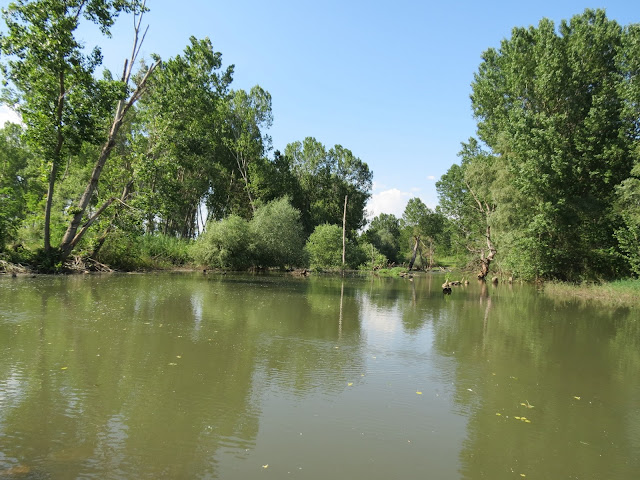May 29th 2013
Ecotourism is something all naturalists should support. I do my part by leading tours and educating tour leaders. These are some snapshots I took while I led this afternoon walk today. Athens has a bad reputation- it is not all concrete and pollution. All you need to do is walk with a naturalist to see another reality... Obviously I cannot show all we saw in 4 hours; and it's ridiculously nice of our clients to allow me to take so many pics while leading. Anyway its for a good cause: So you the reader can glimpse at some of the beauty here... a beautiful historic city center. And there are some wonderful nature sights even at the start of summer. (...so don't explore nature only in the Spring...).
So what do you do on a nature walk in Athens?
I know you can spend days and days here especially if you decide to STUDY Athens. And you don't have to be a specialist or a super-interested naturalist to learn loads of wonderful things. Firstly, there's the history of the making-of-this-city and the making of its unique parkscapes. Here comes the name of Dimitris Pikionis. His restoration project around the Acropolis in the '50s was decades ahead of his time. See this on Phillopapou Hill - a true monument to urban park pathway development. Also the planted trees, shrubs - nearly all native....
Secondly the sheer scenic beauty. Views of the Parthenon from Phillopappou Hill: A world heritage landscape at its finest. Then the Hill of the Nymphs, The Pnyx (Classical Athen's center of Democratic assembly), then the "Great Wall of Athens"; the Hill of Ares, the Athenian Agora, the Roman Agora, the Tower of the Winds, Hadrian's Library, Islamic relics...and more views of the Acropolis and Plaka.
Third the wildlife.
Flora: We saw:
-Bear's Breech (Acanthus molis) the plant that inspired the Corinthian Column.
-Rare plants on the limestone outcrops and walls; such as the white-leaved endemic rock composite called Inula methana and the endemic knapweed called Centaurea raphanina mixta; and tiny bell-flowers (Campanula sp.) and Caper (Capparis ovata) in full bloom.
-Many other plants if you are are interested: From wild garlic to blood-red poppies, chamomile meadows, chaste tree and oleander brilliance to perfect thorny thistles and various interesting grasses. The straw-like warm-yellow grasses on limestone are brilliant this season!
But of course it is past flowering time for many species.
Fauna: We saw:
- Various insects are about: armies of friendly ants, giant hornets, red admiral butterflies, swallow-tailed butterflies, and several other butterflies (yes its peak season for butterflies!). Athens also has many honey bees...
- You hear and see birds (...acually only if your looking carefully). Loads of magpies, collared doves (a close encounter with one inside a church!) and feral rock doves. Special moments with a Sardinian Warbler and then listening to the scratchy notes of Olivaceous Warblers. Flocks of huge Alpine Swifts twirl and trill as they file into a cave below the Parthenon! House sparrows steal crumbs from cafe tables.
-No walk like this is complete without spotting a 'prehistoric' Marginated Tortoise - they are quite common in some parks in Athens (today we found ours in Hadrian's Library).
-And of course the feral animals. Cats, dogs - you can really enjoy watching them for hours on end in Athens (....No other European city offers such intimate encounters with stray animals like this...).
Finally the modern culture:
You learn about Greece from its people. Most of them in this world-renowned attraction are not tourists! You see a lot of young people. Many playing music, selling things, lazying around, smoking things; its their city. You don't see other naturalists with binoculars but there are some cat-lovers here. At some spots there are loads of foreigners too. Ares Hill is a great place to socialize, flirt, look at the sun setting through the Saharan dust. Take close photos of the Acropolis monuments.
Only one thing bothered me today: The grotesque scaffolding on the monuments! They have been working on re-building and re-ordering the rock up on the Acropolis since 1975...when will it stop? The cranes, the small shanty shacks, metallic structures of all kinds...these must someday be totally removed. When??? I humbly ask! It is a almost sacrilege to the landscape worshipper to see this year-after-year. We come here to see the glory that was....Greece! Lets help make it glorious again.
 |
| Some kind of wild garlic (Allium) growing in rocky grassland, Hill of the Nymphs. |
 |
| The rocky ride with Tree Medics and relic phyrgana shrubs and grasses - Philopappou Hill. |
 |
| Lovely tiny Bell-flower (Campanula sp.). Hill of the Nymphs. |
 |
| Ok, this is the epitome of summer Attica landscape for me. Near the center of Athens?..YES! |
 |
| The Hill of Ares is a true honey-pot attracting locals and visitors for the sunset. |
Final Field Notes:
This final Google Earth shot shows the route we took (approx 5 km) beginning from the metro station at Parliament to finish at Monastiraki Sqaure metro station. We begun walking at 16:30 (it was very hot, 29 C) and stopped for a coffee midway at Thission. The Saharan dust dampened the sunset (enjoyed from Ares Hill); and we finished at 20:30. It was not a sprint.
For more info on this inquire at:
www.athensinsiders.com
































































